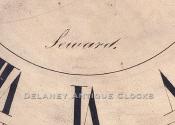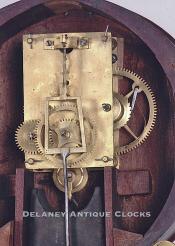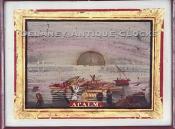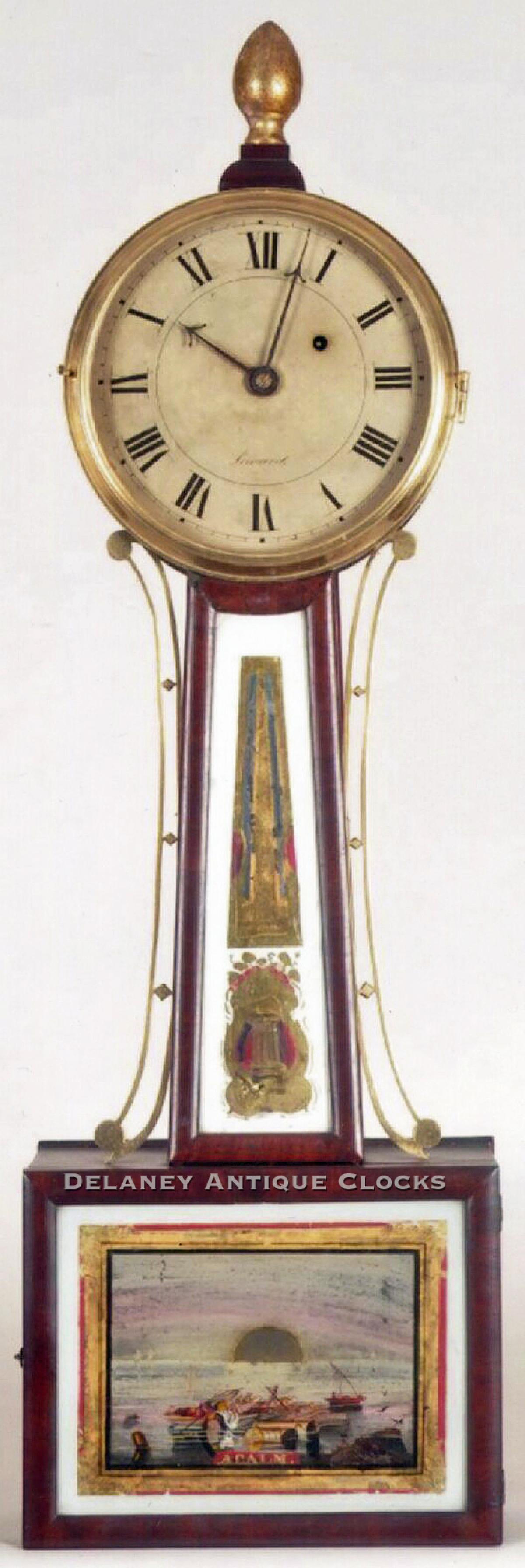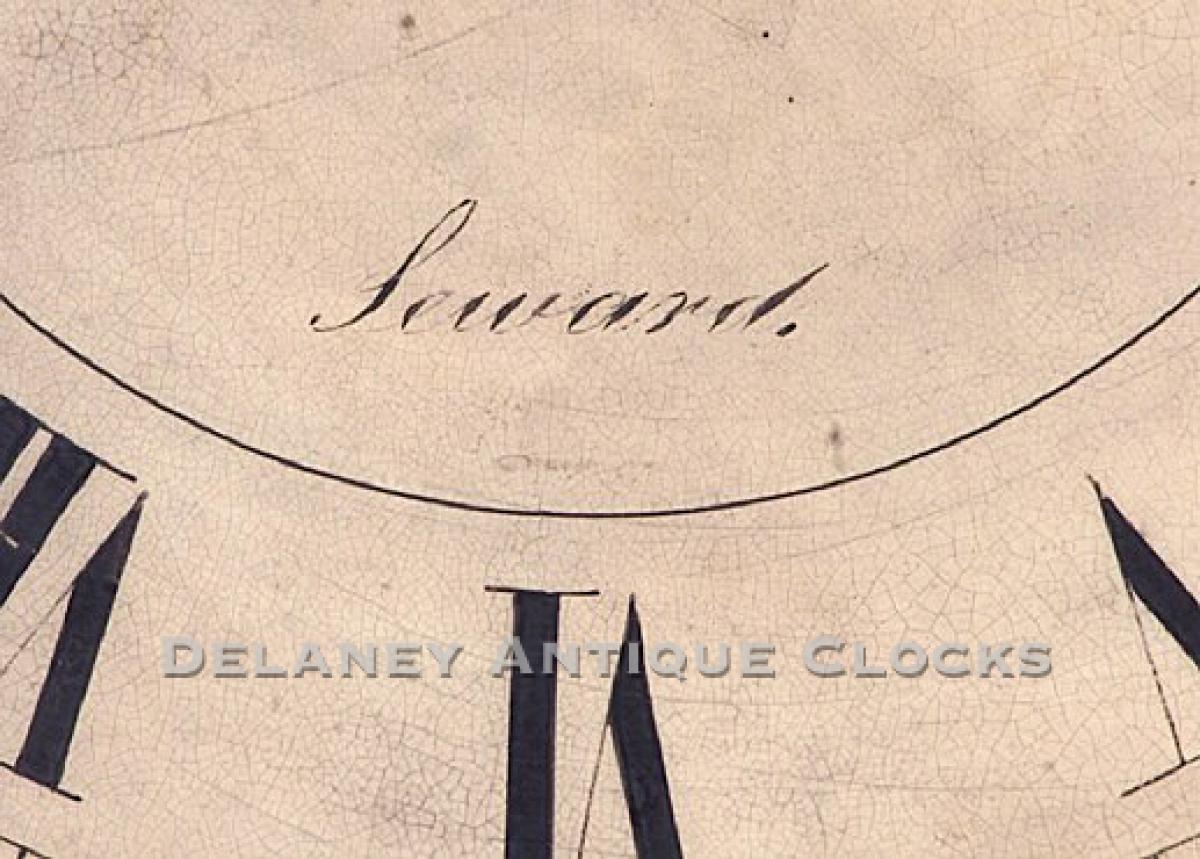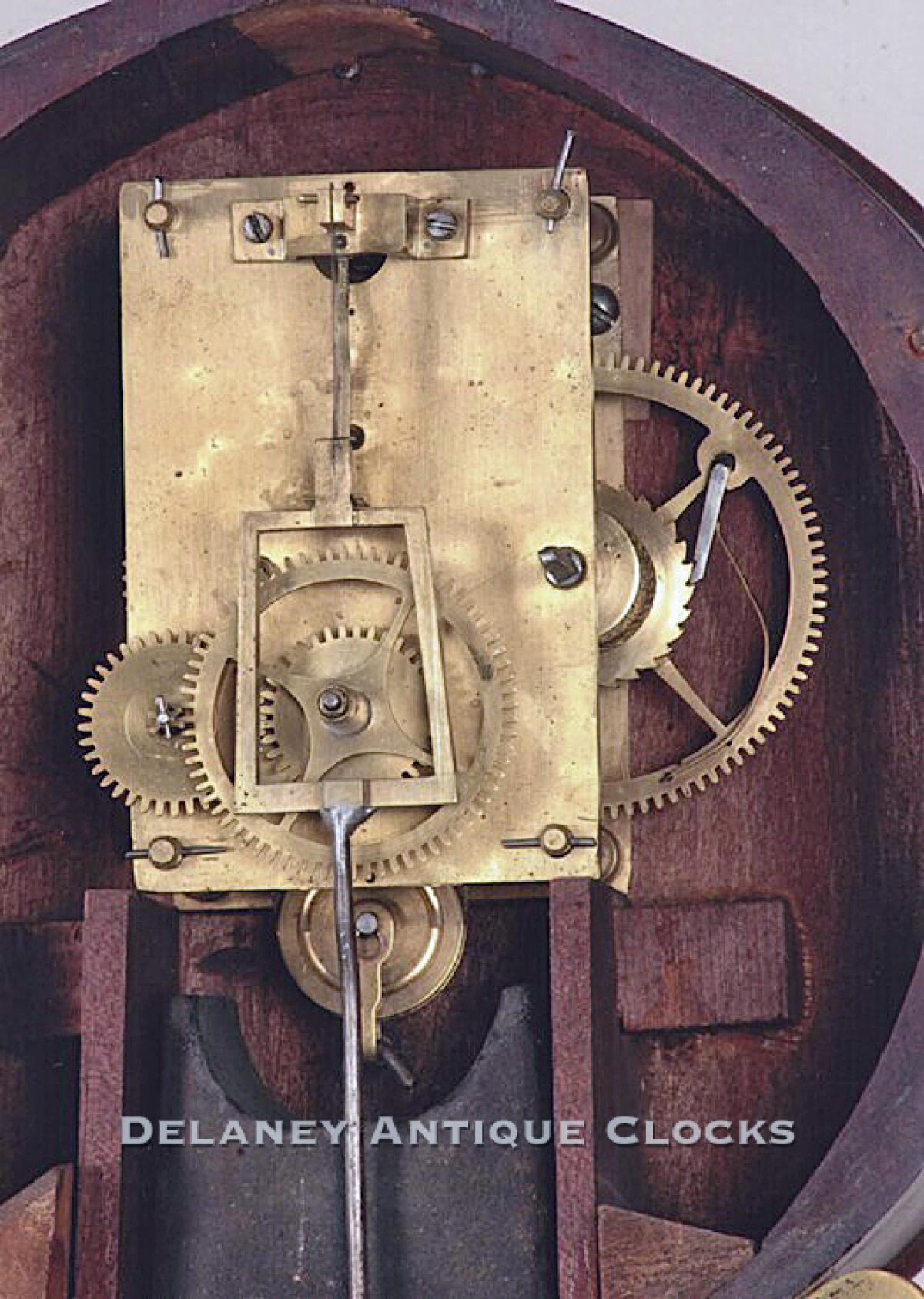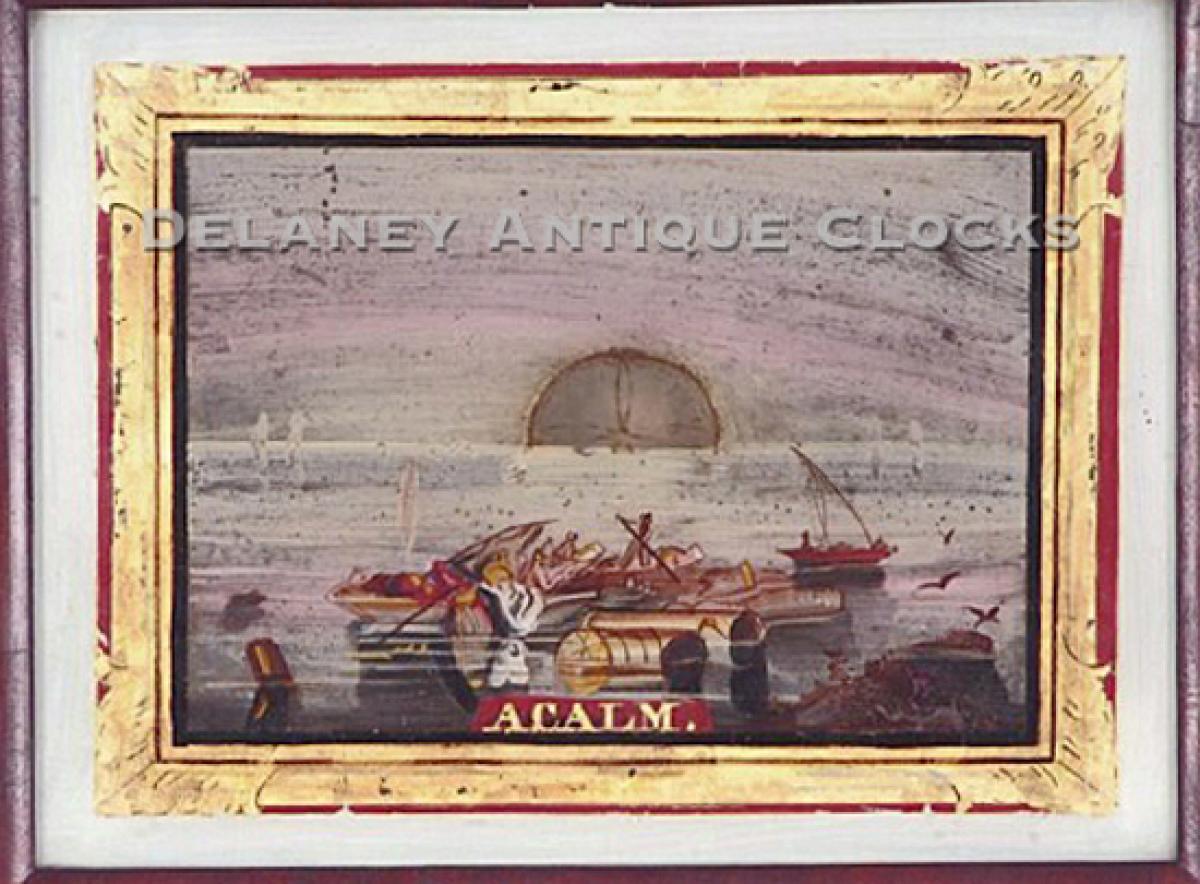Joshua Seward of Boston, Massachusetts. A fine wall timepiece or banjo clock. 215026.
This outstanding example is in fantastic original condition. The case is constructed in mahogany and appears to retain its original finish that has been lovingly maintained. A turned wooden finial in the form of an acorn surmounts the case. This finial retains its original gilding. The half-rounded mahogany frames are fitted with glass panels or tablets. These are paint-decorated from the back and are in outstanding condition. The lower tablet is titled “A Calm.” The scene depicts a large body of water, possibly after a storm. The water is mirror flat. Several boats are amongst various items of debris. The sky is colored in shades of pink. This is a very interesting subject matter. The border and coloring is somewhat traditional for the form. The side arms and bezel are cast in brass. The bezel is fitted with glass and is hinged on the right. It opens to access the painted iron dial.
This dial is signed in script by the Maker, “Seward.” This signature is in excellent original condition and can be clearly viewed from across the room. The time ring is marked out in Roman numerals. Behind the dial is a brass weight-driven movement.
This movement is designed to run for eight days and is powered by the original cast iron weight. It is key wound. The gearing in the time train is nicely formed. The escapement is a recoil format. The pendulum features a brass-faced bob.
This clock measures approximately 33 inches long and was made circa 1835.
Inventory number 215026.
For more information regarding Joshua Seward and wall timepieces, please read Paul J. Foley’s book, “Willard’s Patent Time Pieces.”
Joshua Seward was born in Portsmouth, New Hampshire, on May 5, 1809, and died in Woburn, Massachusetts, on July 21, 1885. Current research suggests that he was most likely an apprentice of John Sawin, a prolific Boston clockmaker. In 1832, Seward partnered with Alva Skinner under the firm Skinner & Seward. In May of 1833, Seward advertised working alone in a shop located at 63 Congress Street. By 1836, he gave up clockmaking to operate the livery stable at the Boylston Estate on School Street in Boston. From 1840 through 1842, Seward lived in Charlestown.


